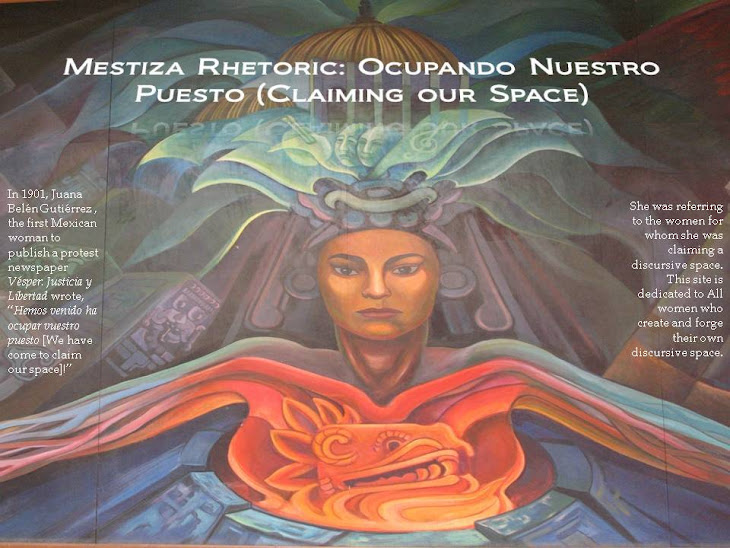 |
| El zócalo in Durango, Mexico. |
Some time has passed since my last post on this blog (about 3 years or so). I'm picking my blog up again for the next couple of weeks to write about my upcoming trip to Mexico. Tomorrow, I am traveling to Durango, Durango, Mexico (Durango is the captial city of the Mexican state of Durango) and later in the week, I am taking a bus ride south to Guanajuato, Mexico. Not many people travel to Durango, Mexico, possibly because of the mislead picture that the American media has painted of this region. I do not let fear tactics of the media rule my life.
I have traveled to Durango on several occasions for research on my forthcoing book,
Ocupando Nuestro Puesto: Mestiza Rhetorics of Mexican Women Journalists & Activists, 1875-1942 (Spring 2015, UA Press). I'm returning for several reasons. I want to continue my professional relationship with the public archives,
Biblioteca Pública Central Estatal José Ignacio Gallegos Caballero and it's diretor, Maestro Oscar Jiménez Luna. They have been more than generous in providing access to their resources upon each of my visits. They have given me permissions to use a picture of the Durango library circa 1922 that had images of the first female students from the college, then called Instituto Juárez, now called Universidad Juárez del Estado de Durango.
For the second part of my trip, I am planning on retracing the steps of one of the women I write about in my book, Juana Belén Gutiérrez de Mendoza (1875-1942) took from one region to another. She left her homeland of Durango in 1900 ánd traveled to Guanajato, Mexico to start her own protest newspaper,
Vésper: Justicia y Libertad. She went with 3 children, Laura, Julia, and Santiago and also her goat, Sancha. The city of Guanajuato was at the time a growing hot-bed of resistance against the Porfirian government and dictatorship, and Juana new she wanted to have her voice be heard. I have never been to Guanjuato, but I plan to find the places where she may have worked from.
I will be posting pictures of places I go, interesting things I see, and people I meet along the way. Follow me!

+002.JPG)
+029.JPG)













